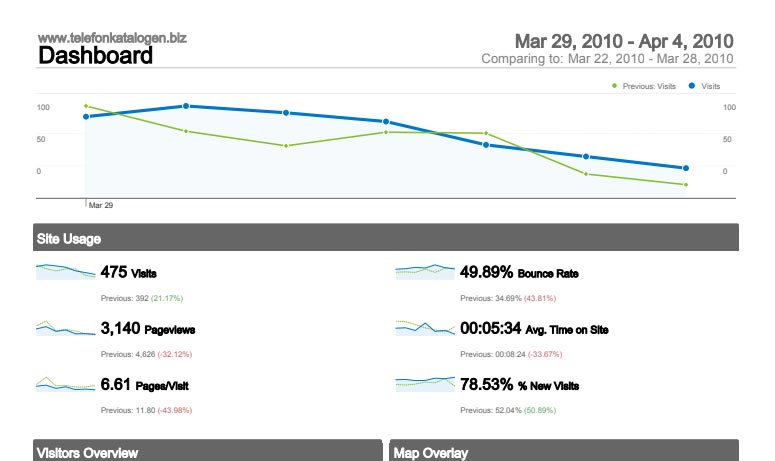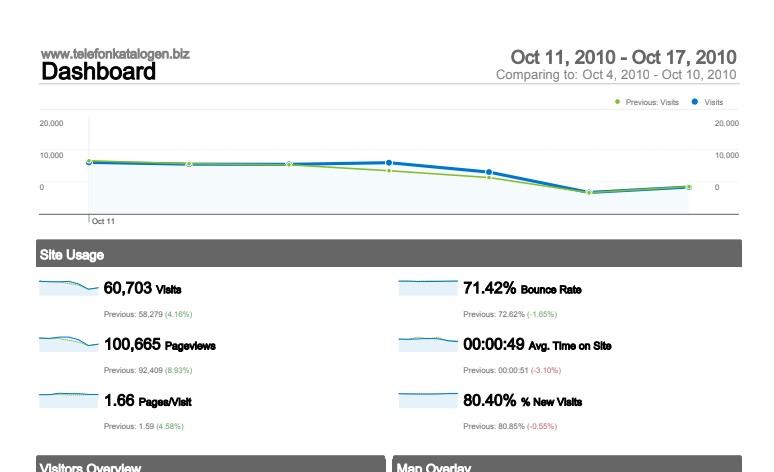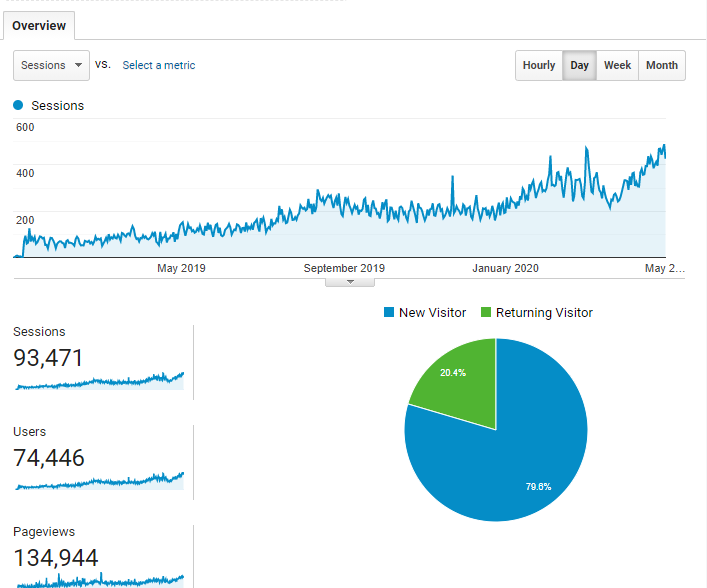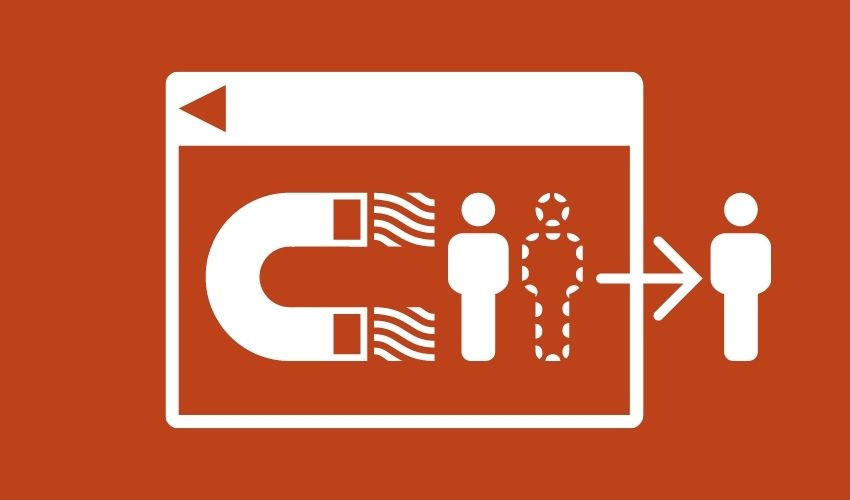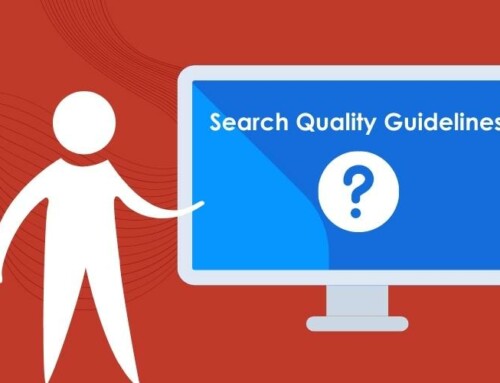Do you have a High Website Bounce Rate?
A high percentage of visitors bouncing from a page indicates the content has failed to engage them.
Your website’s performance depends on how visitors search intent on finding what they’re looking for.
Visitors often bounce from a website too, but this can be managed by better understanding visitor behavior.
Do you want to learn everything about correcting high bounce rate?
Before I teach you how it works and how to do it, let’s first go over the definition of High Bounce Rate, and then we will dive into the typical mistakes that we all make and how to fix them.
Let’s get started…
Table of Contents
What Is High Bounce Rate?
Google calculates bounce rate as the percentage of visitors who leave a Web site from the same Page.
The bounce rate pertains to the percentage of visitors that leave your website (or “bounce back”) after viewing only one Page on your site.
This can happen if a user has not interacted with the webpage for more than 30 minutes.
What is bounce rate, and why is it wrong?
Although bounce rate is a relative term, it depends on what you need from your site and where you fit into the x industry.
Having a low bounce rate can be seen as a week point too. Out of the websites studied, most have an average bounce rate around 26% to 70%.
Based on the data they gathered, Best Tips for Amazing Family Travel With Your Kids came up with a classification system to grade bounce rates.
- 25% or lower: Awesome
- 26-40%: Excellent
- 41-55%: Average
- 56-70%: Higher-than-normal prices may be understandable depending on the website
- 70% or higher: find out if anything is broken.
The bounce rate for your website is available in the Audience Overview tab of Google Analytics.
Google Analytics displays data about visitor bounce rates for individual channels. Also, pages in the behaviour column of various views. Most people have experienced a high bounce rate at least once in their lives. Learn what causes the high bounce rates and how to fix them.
1. Slow-to-Load Page
Google is revamping its focus on website speed, especially as a part of the Core Web Vitals initiative.
Slow loading times can cause potential visitors not to stick around and continue browsing your site.
Speed is a Google ranking factor for sites.
Google wants to promote content that offers a positive experience for users. This because sites with slow load times are frustrating.
One of the factors impacting search engine results is that people want facts. This is one reason why Google has attempted to highlight information in featured snippets.
If your Page takes over seconds to load, website visitors may get fed up and quit.
Fixing website speed is a lifelong journey for SEO professionals. However, with each incremental fix, you should see an incremental improvement in speed.
Review the speed of your site using tools like:
- The Google Search Console PageSpeed reports.
- Google PageSpeed Insights.
- Lighthouse reports.
- GTmetrix.
- Pingdom.
Third-party scripts and other optimizations can free up bandwidth, but you need the experts to put them.
2. Self-Sufficient Content
You never know what takes place when you publish your work, but you need to have content that provides people with all they need.
Ultimately, this can be a great thing. But, first, content marketers must keep in mind that crafting copy. This inspires someone for more than a few minutes is an achievement worth celebrating.
Perhaps you have a landing page with a lead form that only needs to be completed.
To determine whether bounce rates are a cause for concern, you’ll want to look at the Time Spent on the Page—also, Average Session Duration metrics in Google Analytics.
To determine if the high bounce rate is a problem, you can run user experience tests and A/B testing.
If you take more Time on the Page, that sends a positive signal to Google that they found your Page relevant to their search.
If one wants to rank for that particular search query, the intent of this kind is gold.
Suppose the user spends less than a minute on the Page, for example, with a quick-hit CTA form. Make sure to include some of your blog posts, as well as links on your contact page so readers can read about you before they get in touch.
3. Disproportional Contribution by a Few Pages
Suppose we look at the example from the previous section. You may find that some pages on your site contribute disproportionately to your site’s bounce rate.
Google is skilled at identifying the differences between these.
Suppose your single CTA landing pages are quick and easy for users to bounce through. But visitors to content-based, longer-form pages in your site seem less likely to bounce after they have taken action. You may be doing a good job.
However, before you start changing things up, confirm your hypothesis that some of these pages with high bounce rates are causing users to leave in droves.
Google Analytics provides information on the content that draws people to your site. Go to Behavior > Website Content > Landing Pages and filter by bounce rate to find this information.
Consider adding an extra advanced filter to remove pages that would skew the results. So, for example, while you may be tempted to obsess over the one Twitter share with five visits with all your social UTM parameters tacked on to the end of the URL, it is not helpful.
When contemplating volume, I use my rule of thumb to determine the least amount.
Choose the number of visitors you would like to receive and then filter for Sessions that are greater than that.
4. Misleading Title Tag and Meta Description
Have you included the right keywords in your title tag? Also, meta description when summarizing on-page content?
The reason spacing is crucial to website design is that a visitor could enter your site thinking the content was about one thing only to find out it’s not and immediately exit.
This is simple to fix, whether it was an innocent mistake or attempting to game the system with keyword clickbait.
Either revise the content on your Page or rewrite it to attract visitors interested in your offerings.
You can check the type of meta description Google generated for your Page to determine whether it is appropriate. If necessary, you can change it:
5. Blank Page or Technical Error
If you don’t see anyone spending more than a few seconds on your Page, and it seems like they’re hitting blank pages or timeouts. The problem may lie with your 404 errors. So, please take a look at the Page in your audience’s most popular browser configuration (e.g., Safari on desktop and mobile. Besides, Chrome on mobile, etc.) to replicate their experience.
You can also check in Google Search Console to see the error from Google’s perspective. If a problem arises, address it yourself or consult with someone who can– this type of issue can cause Google to penalize your site and drop you from the search results.
6. Bad Link from Another Website
Referral traffic does not come to your site through a search engine. Instead, people are referred to your site by other people or organizations linking back to it.
The website you are being redirected to may not be qualified with your site. Else the anchor text and context might make it seem like a better option than what is coming up next.
Sometimes, this is due to the outcomes of sloppy copywriting. For example, the writer or publisher linked to your site in the wrong part of the text, or they didn’t mean to link to your site at all.
Reach out to the article’s author if you have any requests. If they cannot assist, reach out to the article’s editor or webmaster for possible revisions.
Politely ask the person to remove the link or change the context of their post.
Unfortunately, the website that you clicked on may be trying to sabotage your search engine rankings with some negative SEO tactics.
If you have a link to remove, then please ask them to remove it. However, please update your disavow file in Search Console if they refuse or fail to do so.
Disassociating your site from a domain won’t reduce the bounce rate. But it will tell Google not to measure the linking site’s relevance when assessing and ranking your pages.
7. Affiliate Website Landing Page or Single-Page Site
If one is an affiliate, the whole point of your Page may be to deliberately send people away from your website to the merchant’s site.
In these cases, your job is to create a page with the highest bounce rate possible. A single-page website, such as a portfolio or landing page for your e-book, is just as effective. Sites like these are known to have a high bounce rate or several visitors who leave the site without ever viewing a single page.
Remember that Google is very good at knowing when a site has met its user’s goals.
If you consider your bounce rates a problem, there are ways to change the rate to better suit your website’s goals.
For “Single Page Apps,” or SPAs, changing your analytics settings can show different parts of a page as separate pages so that the bounce rate reflects user experience more accurately.
8. Low-Quality or Under Optimized Content
Visitors might be bouncing off your website because your content is not compelling. Before publishing your work, have a trusted colleague or friend look it over for vital errors. (Ideally, this person falls into your target audience, preferably content marketers.)
One possibility is that your content may not have been optimized for the online medium – or the target audience.
Are you writing with a simple sentence structure?
Using header tags will help the flow of information on the Page.
Does it answer your questions?
Did you add images to break up the text and make it easy on the eyes?
Writing for the web is different from writing for magazines or books.
Improve your online content by brushing up on your copywriting skills.
Another possibility is that your content is poorly written and doesn’t address the needs of your audience.
Consider outsourcing your copywriting or content strategy to a freelancer to help you craft compelling content that converts.
9. Bad or Obnoxious UX
You’re probably annoying people with ads, pop-up surveys, and email subscribes buttons.
These CTA-heavy features may be irresistible to marketing and sales teams, but visitors can quickly become overwhelmed by them.
Google’s Core Web Vitals are all about website user experience; they’re ranking factors and can make or break a happy customer.
Do you feel like your website is challenging to use?
Perhaps your visitors are looking for more content, but the blog itself is challenging to navigate because it lacks a search bar or mobile menu. Since online marketers maintain websites, they are very familiar with what’s on them. It’s accessible to getaway. What seems intuitive to us is not at all intuitive to others.
If you’re having problems with your web or user experience design, a specialist will be able to identify the issue quickly.
10. The Page Isn’t Mobile-Friendly
Developing a mobile-friendly website is essential, but many neglects to do so when outside of their office.
Google’s index is changing to mobile-only next year. Yet, even in 2018, one study found that nearly a quarter of the top websites were not mobile-friendly.
Websites that are not optimized for mobile have both an aesthetically displeasing appearance and a slower load time.
The high bounce rate should come as no surprise, even if the site were designed responsively.
Some of the critical information may move below-the-fold when a page is squeezed into a mobile format.
Old new: Mobile users now only see your site’s navigational menu instead of seeing a headline that matches what they saw in search.
If a page doesn’t provide what they are looking for, searchers bounce back to Google.
If the web page has a high bounce rate and you don’t immediately understand what’s wrong, test it on your mobile phone.
Visitors looking for mobile-friendly sites can find them using Google’s free Test My Site tool.
You can also check for mobile rendering issues in the Search Console and use Lighthouse to test.
Regardless of you’re viewing on a small smartphone screen or a large desktop computer monitor, your site should have high-quality graphics and images that are easy to read.
11. Wonky Google Analytics Setup
Your site might not be using Google Analytics. So, the tracking codes may have been omitted from certain pages.
12. Content Depth
Google has helpful features like featured snippets and knowledge panels for people looking for quick information. But we offer in-depth content that goes a step beyond what they need.
Provide compelling links in your content to draw people to the next Page and keep them reading.
And for those who want a quick answer, provide a TL;DR summary at the top.
13. Asking for Too Much
Please do not share your credit card, social security number, or other personal information until someone has contacted you about their interest in a product or service.
People, since there are so many scam websites out there, may be suspicious. It is not uncommon for a big pop-up asking for info to cause people to leave immediately.
A webmaster or content creator’s job is to create content that ramps consumer satisfaction and decreases their bounce rate to build trust with the user. Of course, Google would like it if users find it pleasurable.
Do not panic. A high bounce rate does not mean the end of the world. For example, even though a webpage may have a pleasing design and layout, it is still possible to have a high bounce rate.
Bouncing visitors from your site can explain how well it is functioning, but if you don’t think about them with nuance, they are a vanity metric.
Presenting bounce rates without context can be misleading. Should a visitor to your site immediately hit the back button once they’ve landed, it doesn’t mean that your content is not engaging or, your product solutions are contrived.
That makes the user frustrated, and they will not return. Even if visitors are fewer, they may be less qualified because of this frustration.
Five Tips for Reducing Your Website Bounce Rate
Regardless of the reason for your high bounce rate, here are general best practices that can help you lower it.
1. Ensure your content lives up to its hype
Your title and meta description tags are a website’s virtual billboard in Google.
Your content should match what you are advertising. For example, if your Page in SERPs states that it is an ultimate guide, but it contains only three tips, then it is not the best quality.
- It would be best if you also made your content readable.
- Place white space between each of your sentences.
- Include supporting images.
- Sentences should be short when you’re writing for a younger audience.
- Spellcheck can help you spell better!
- Effective design is vital when designing a website.
- Don’t overwhelm kids with adverts.
2. Put Important Information Above the Fold
At times the content matches what you advertise in your title tag and meta description.
When people first land on a web page, they immediately form an opinion.
You want a great first impression because it validates the visitor’s expectations when they arrive.
A prominent Heading1 should match the title they read on Google. If it’s an eCommerce website, a photo should also match the description.
Give an excellent first impression
Ensure your banners are short so that they do not cause people to scroll down far enough to be out of the habit loop.
Make sure the user finds what they are searching for as soon as they load the Page.
3. Speed Up Your Website
Google is always striving to provide the best possible experience. The site aims to show fast loading pages and very easy for people to view on their devices.
There are always new ways to compress, optimize and otherwise speed up the load time.
Implement AMP.
Compress all the images before loading them to your site. Besides, only use the maximum display size necessary.
Check and remove any external or load-heavy scripts, x plugins, and stylesheets. If there is anything not needed, omit them. For the required ones you do need, see if there may be a faster option.
Learn the basics: use a CDN, minify JavaScript and CSS, and set up browser caching.
Check lighthouse.com for more suggestions.
4. Remove unnecessary information
Don’t overwhelm your visitors with pop-up ads, in-line promotions, or other content they find distasteful.
Visitors can be overwhelmed with the visuals on a page, which will cause them to bounce. So instead, choose a critical CTA that you want visitors to take away from your Page and highlight it strongly.
For everything else, delegate it to your sidebar or footer.
Edit, edit, edit!
5. Help people get to their desired destination more efficiently
Your site and business will see an increase in traffic if you make it easy on people.
Use on-site search with predictive search, helpful filters, and an optimized “no results found” page. Prove categories that drive lower bounce rates and have the highest conversion rates. This could change how you categorize your menu.
Include a Table of Contents with anchor links in your long-form articles so readers can navigate to different sections.
Conclusion
There are many reasons why a website may have high bounce rates. It could be that the site is too slow.
There aren’t enough landing pages for each product or service offered. Or you’re not targeting your audience in marketing campaigns.
Whatever the reason, it’s essential to identify and fix these problems.
That is before they cause more harm than good to your company’s reputation online. We can help! Reach out to us to assess your digital marketing strategy with our expert team of internet marketers who can diagnose what might be affecting your company’s web traffic.
Also, we’ll provide recommendations on how to improve them.
So you get better results from all aspects of your business!
FAQs
What do high bounce rates mean?
A high website bounce rate signifies that an entrance page of the user’s website doesn’t match what they want. Unfortunately, this means you can’t expect them to continue exploring past your site’s portal and buy anything or submit their information, so it will be challenging to get any conversion, sales, or leads.
What type of post has the highest bounce rate?
- Slow loading pages
- Businesses use a variety of tactics to make it more difficult for customers to complete their first transaction.
- Visitors who see something outside of what they came for.
- Visitors to your website will be unable to skim over the content. That is before they’ve landed on what they’re looking for, which makes for a frustrating experience.
What is the average bounce rate for a website in 2021?
If you maintain a bounce rate around 26%-70%, your average should fall between 41%-55%. If your bounce rate is 26%-40%, that’s excellent. It’s always relative.
For a web page, does having a high bounce rate mean it is wrong?
A high bounce rate means that 70% of visitors to your website don’t do anything after seeing one Page.
Websites with high bounce rates can be confusing because of the ambiguity between low conversion rates and regular blog pages. This confusion arises when people mistake high bounce rates for a problem instead of what they are: perfectly normal website analytics.
How do you calculate bounce late?
A website’s bounce rate calculation is done by dividing the number of one-page hits by its
Share This Story
